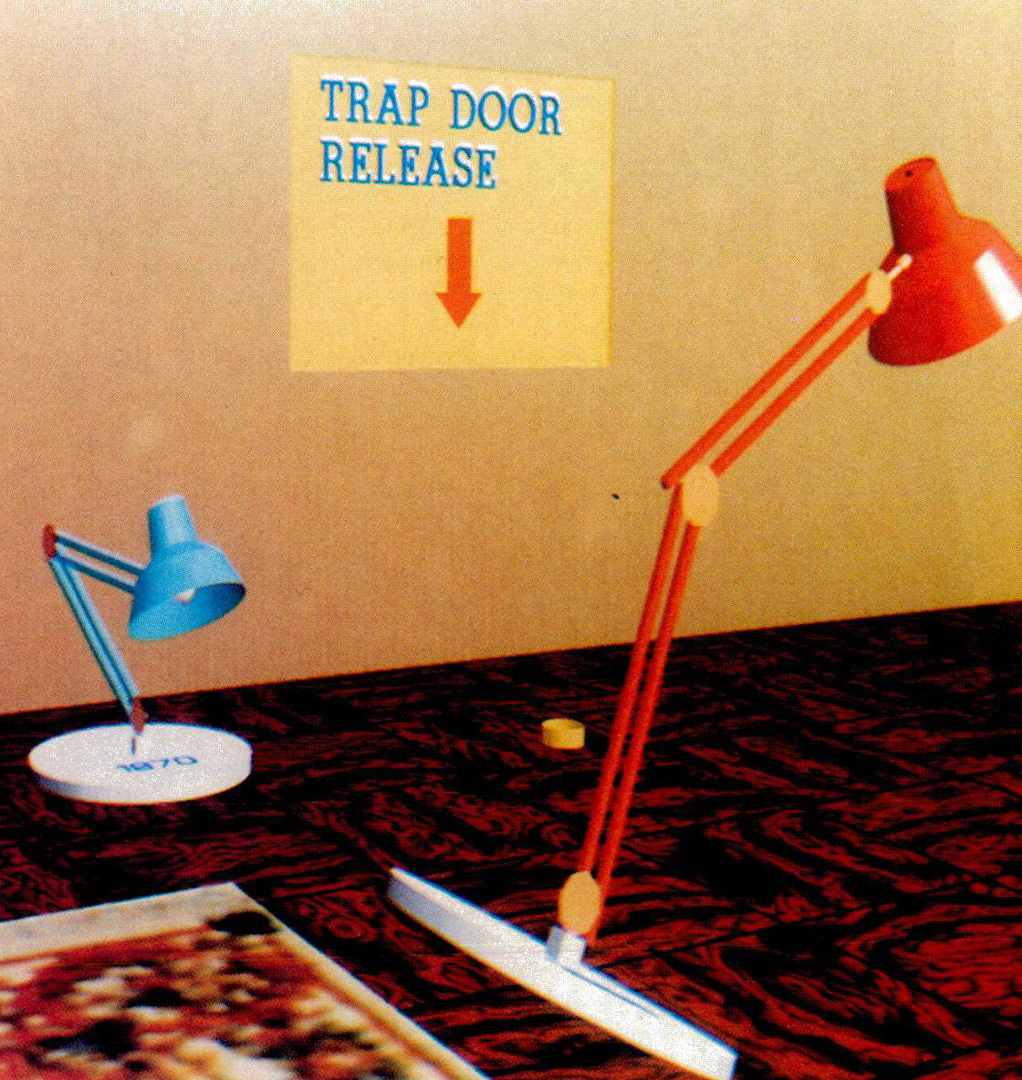“Reusable motion synthesis using state-space controllers” by Panne, Fiume and Vranesic
Conference:
Type(s):
Title:
- Reusable motion synthesis using state-space controllers
Session/Category Title: Animation
Presenter(s)/Author(s):
Moderator(s):
Abstract:
The use of physically-based techniques for computer animation can result in realistic object motion. The price paid for physically-based motion synthesis lies in increased computation and information requirements.1 We introduce a new approach to realistic motion specification based on state-space controllers. A user specifies a motion by defining a goal in terms of a set of destination states. A state-space controller is then constructed, which provides an optimal-control solution that guides the object from an arbitrary starting configuration to a goal. Motions are optimized with respect to time and control energy. Becasue controllers are specified in terms of destination states only, it is easy to reuse the same controller to produce different motions (from different starting states), or to create a complex sequence of motions by concatenating several controllers. An implementation of state-space controllers is presented, in which realistic motions can be produced in real time. Several examples will be considered.
References:
1. R. Alexander. The gaits of bipedal and quadrupedal animals. Int. Journal of Robotics Research, Summer 1984.
2. W.W. Armstrong. Recursive solution to the equations of motion of an n-link manipulator. Proc. 5th World Congress Theory Mach. Mechanisms, volume 2, 1343-1346, 1979.
3. W.W. Armstrong, M. Green, and R. Lake. Near-real-time control of human figure models. IEEE Computer Graphics and Applications, 7(6):52–61, June 1987.
4. H. Asada and J.-J.E. Slotine. Robot Analysis and Control. John Wiley and Sons, 1986.
5. N.I. Badler, K.H. Manoocherhri, and G. Waiters. Articulated figure positioning by multiple constraints. IEEE Computer Graphics and Applications, 7(6):28-38, June 1987.
6. R. Barzel and A.H. Ban’. A modeling system based on dynamic constraints. Proc. of SIGGRAPH” 88 (Aug. 1988). ACM Computer Graphics 22,4, 179-188.
7. L.S. Brotman and A.N. Netravali. Motion interpolation by optimal control. Proc. of SIGGRAPH’88 (Aug. 1988). ACM Computer Graphics 22,4,309-315.
8. A. Bruderlin. Goal-directed, dynamic animation of bipedal locomotion. Technical report, Simon Fraser University, 1988.
9. N. Burtnyk and M. Wein. Computer generated keyframe animation. Journal of the Society of Motion Picture and Television Engineers, 80(3):149-53, March 1971.
10. T. Calvert, J. Chapman, and A. Patla. Aspects of the kinematic simulation of human movement. IEEE Computer Graphics and Applications, 41-50, Nov. 1982.
11. C. Csuri. Real time film animation. 1EEE Convention Digest, 42-3, March ! 971.
12. R. Featherstone. The calculation of robot dynamics using articulated body inertias, Int. Journal of Robotics Research, 2(1):13-30, Spring 1983.
13. D.R. Forsey and J. Wilhelms. Techniques for interactive manipulation of articulated bodies using dynamic analysis. Proc. of Graphics Interface, 8-15, 1988.
14. M. Girard. Interactive design of computer-animated legged animal motion. IEEE Computer Graphics and Applications, 7(6):39-5 l, June 1987.
15. S, Grillner. Locomotion in vertebrates: Central mechanisms and reflex interaction. Physiological Reviews, 55:247-304, 1975.
16. Paul M, tsaacs and Michael E Cohen. Controlling dynamic simulation with kinematic constraints, behaviour functions and inverse dynamics. Proc. of SIGGRAPH ’87. ACM Computer Graphics 21,4, 215-224.
17. P.M. Isaacs and M.F. Cohen. Mixed methods for complex kinematic constraints in dynamic figure animation. The Visual Computer, 4:296-305, 1988.
18. D.H. Kochanek and R.H. Bartels. Interpolating splines for keyframe animation. Graphics interface, 41-42, 1984.
19. J. U. Korein and N. I. Badler. Techniques for generating the goal-directed motion of articulated structures. IEEE Computer Graphics and Applications, 71-81, Nov. 1982.
20. B.C. Kuo. Automatic Control Systems. Prentice-Hall, Inc., 1987.
21. J. Lasseter. Principles of traditional animation applied to 3- d computer animation. Proc. of SIGGRAPH’87 (July 1987). ACM Computer Graphics 21,4., 35–44.
22. J. Lasseter and W. Reeves. Luxo jr. Pixar Video, 1986.
23. N. Magnenat-Thalmann and D. Thalmann. Computer Animation: Theory and Practice. Springer-Verlag, 1985.
24. R. B. McGhee and G. I. Iswandhi. Adaptive locomotion of a multilegged robot over rough terrain. IEEE Transactions on System, Man, and Cybernetics, 176-182, April 1979.
25. G.S.P. Miller. The motion dynamics of snakes and worms. Proc. of SIGGRAPH’88 (Aug. 1988). ACM Computer Graphics 22,4, 169-178.
26. H. Miura and I. Shimoyama. Dynamic walk of a biped. Int. Journal of Robotics Research, 60-74, Summer 1984.
27. T. J. O’Donnel and Arthur J. Olsen. Gramps – a graphical interpreter for real-time interactive three-dimensional picture editing and animation. 1981.
28. K. Ogo, A. Ganse, and I. Kato. Quasi dynamic walking of biped walking machine aiming at completion of steady walking. Third Symposium on Theory and Practice of Robots and Manipulators, 340-356, Sept. 1978.
29. W.H. Press, B.P. Flannery, Saul A. Teukolsky, and William T. Vetterling. Numerical Recipes. Cambridge University Press, 1986.
30. M.H. Raibert. Legged robots that balance. Artificial InteJligence series. MIT Press, Cambridge MA, 1985.
31. C. Reynolds. Computer animation with scripts and actors. Proc. of SIGGRAPH’ 81., 1981.
32. M.L. Shik and G. N. Orlovskii. Neurophysiology of a locomotor automatism. PhysiologicaIReviews, 56:465-501, 1976.
33. S. Steketee and N.I. Badter. Parametric keyframe interpolation incorporating kinetic adjustment and phrasing control. Proc. of SIGGRAPH” 85 (July 1985). ACM Computer Graphics 19,3.
34. D. Sturman. interactive keyframe animation of 3-d articulated models. Graphics Interface, 35–40, 1984.
35. M. Townsend and A. Seirig. Effect of model complexity and gait criteria on the synthesis of bipedal locomotion. IEEE Transactions on Biomedical Engineering, 433-444, November 1973.
36. M. W. Walker and D. E. Orin. Efficient dynamic computer simulation of robotic mechanisms. Journal of Dynamic Systems, Measurement, and Control, 205-211, Sept. 1982.
37. J. Wilhelms. Virya: A motion control editor for kinematic and dynamic animation. Proc. Graphics Interface 86, 141-146. Morgan Kaufman, May 1986.
38. J. Wilhelms, M. Moore, and R. Skinner. Dynamic animation: interaction and control. The Visual Computer, 4(6):283-295, 1988.
39. J. Wilhelms. Using dynamic analysis for realistic animation of articulated bodies. IEEE Computer Graphics and Applications, 7(6):12-27, June 1987.
40. A. Witkin and M. Kass. Spacetime constraints. Proc. of SIG- GRAPH’88 (Aug. 1988). ACM Computer Graphics 22,4, 159- 168, 1988.
41. D. Zeltzer. Motor control techniques for figure animation. IEEE Computer Graphics and Applications, 53-60, Nov. 1982.




